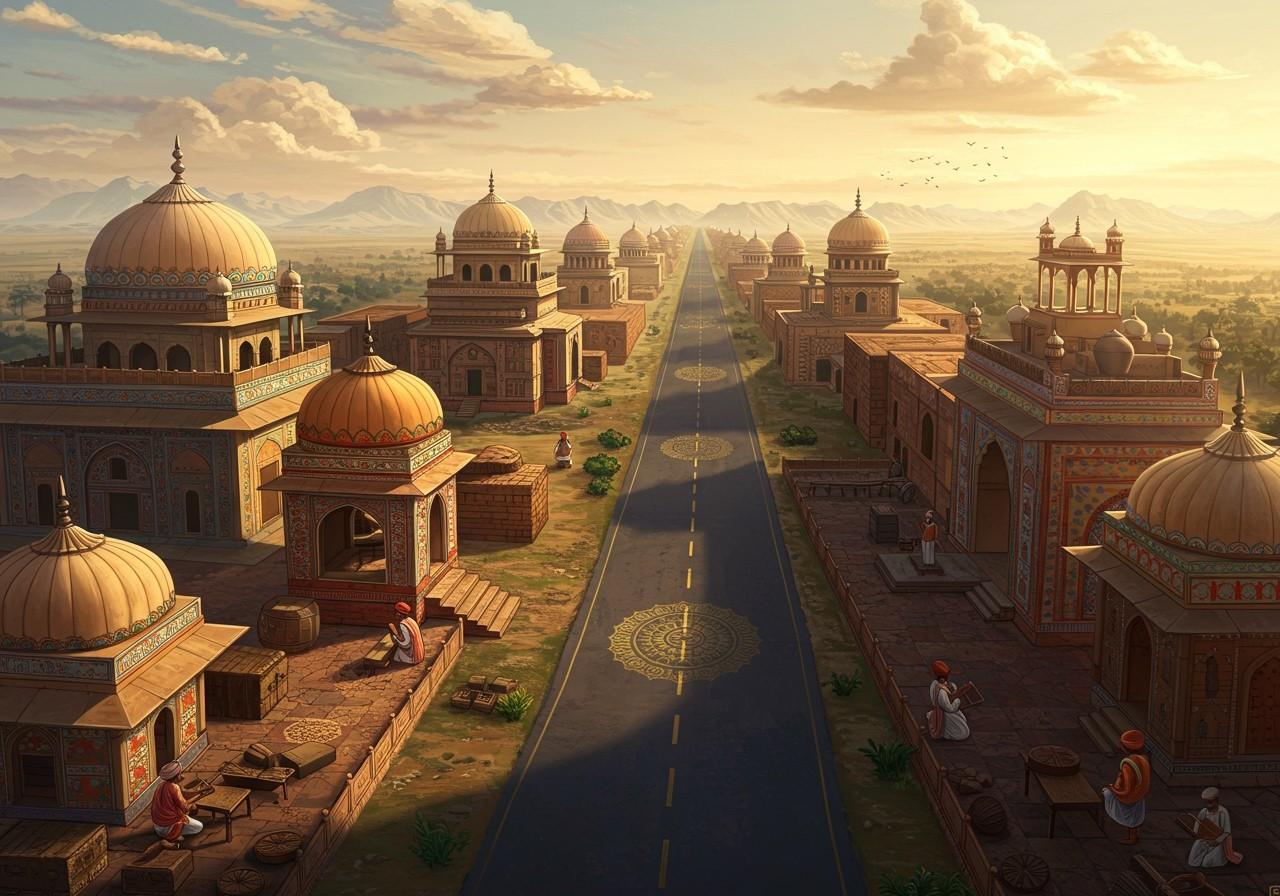
The Grand Trunk Road (GT Road), one of Asia’s oldest and longest major roads, has existed for at least 2,500 years, connecting Central Asia to the Indian subcontinent. Spanning approximately 3,655 km (2,271 mi) from Teknaf, Bangladesh, to Kabul, Afghanistan, this ancient route has witnessed centuries of trade, cultural exchange, and historical events. Its existence is documented in ancient Buddhist literature and Indian epics like the Mahabharata, highlighting its enduring significance.
Historical Significance
The GT Road’s origins trace back to the Mauryan Empire (322-185 BCE), with subsequent rulers contributing to its development. Significantly rebuilt and improved by Sher Shah Suri between 1540 and 1545, the road employed thousands of skilled laborers, artisans, and engineers. During the British Raj, it was further developed for administrative and military purposes, solidifying its role in shaping the subcontinent’s history.
Route and Landmarks
The GT Road traverses diverse landscapes, from coastal regions to arid plains and mountainous terrains. Key landmarks along the route include the Howrah Bridge in Kolkata and the Lahore Fort. Each country the road passes through—Bangladesh, India, Pakistan, and Afghanistan—has its own unique section with varying conditions and usage patterns. Historical milestones, such as mileposts and ancient inscriptions, mark the passage of time and the road’s evolution.
Construction and Engineering
The construction techniques and materials used for the GT Road have evolved over time. Initially, packed earth and gravel formed the road’s foundation. Today, modern materials like asphalt and concrete are prevalent. Architectural features like drainage systems and culverts allow the road to withstand heavy traffic and harsh weather conditions. Bridges and embankments facilitate river crossings and navigation through challenging terrain. These advancements reflect the continuous efforts to adapt and improve the road’s infrastructure.
Architectural Marvels Along the GT Road
The GT Road is punctuated by architectural landmarks that reflect its rich history. Sher Shah Suri’s caravanserais offered rest and shelter to travelers. Roadside wells and baolis (stepwells) provided essential water supplies. Trees planted along the route offered shade and enhanced the aesthetic appeal. Religious structures, including temples, mosques, and shrines, catered to the spiritual needs of those traversing the road. Historical gates and fortifications marked the entry points of major cities, showcasing the architectural styles of different eras.
Poojn.in: Your Companion on a Spiritual Journey
As you journey along the Grand Trunk Road, enhance your spiritual experience with authentic puja items from poojn.in, India’s leading cultural goods and services store. Our collection includes:
- Red Sandalwood (Rakta Chandan): Sourced for purity and ideal for tilak and religious ceremonies at historic temples along the GT Road. Experience the traditional significance of this sacred wood.
- Pure Cotton Wicks: Perfect for offering deepam (lighting lamps) at ancient roadside shrines, connecting you with the spiritual heritage of the route. Sustainably sourced and crafted for optimal burning.
- Brass Diyas: Traditional lamps that complement the historical aesthetics of GT Road monuments. Choose from a variety of designs and sizes to enhance your puja rituals.
- Copper Kalash: Sacred vessels reflecting the architectural traditions of the region. Use these beautiful kalashes for ceremonial purposes and connect with the rich cultural heritage.
Visit poojn.in to discover our complete collection. All products are verified for authenticity and delivered across India with secure packaging.
Note: Product availability may vary. Please check the website for current stock and pricing.
Preserving the Legacy of the Grand Trunk Road
The Grand Trunk Road stands as a testament to human ingenuity and resilience. It has served as a vital artery for trade, cultural exchange, and communication for millennia. As we continue to modernize and preserve this historic route, we honor its legacy and ensure it remains a connector of communities and cultures for generations to come.
Explore relevant resources on poojn.in to deepen your understanding of India’s rich cultural heritage:
- Jogulamba Temple: Accommodation and Amenities Guide
- Jogulamba Temple Significance in Hindu Mythology
- Leaning Temple of Huma: History, Architecture, and Mystery


